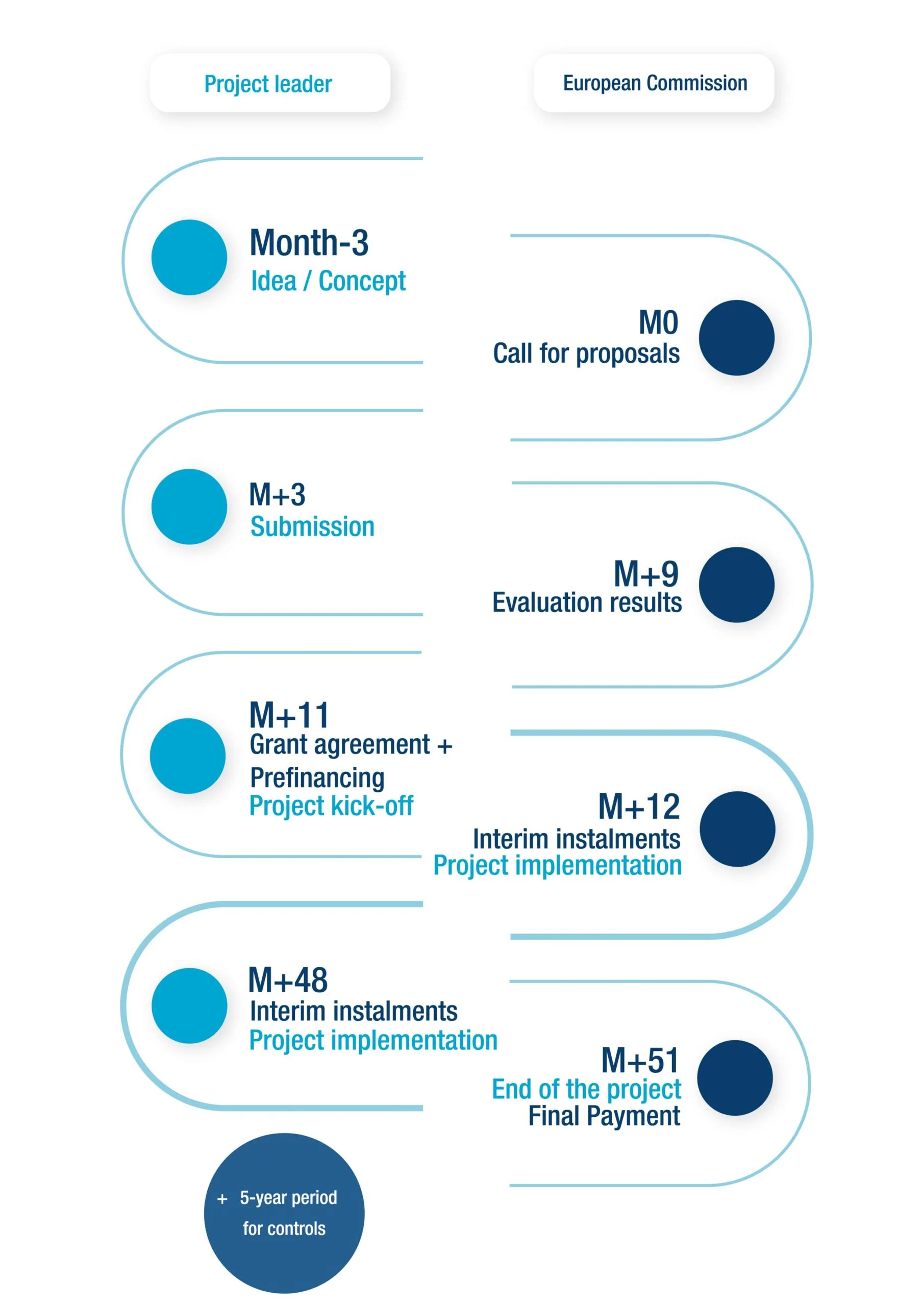+33(0)1 42 54 60 64 | contact@welcomeurope.com
+33(0)1 42 54 60 64 | contact@welcomeurope.com
Grants to support the audiovisual, cultural and creative sectors in Europe, awarded and managed in accordance with Title VIII of the Financial Regulation.
2.4 billion euros
Association & NGO
EU & International Organisation
Large company (> 250 employees)
Local Authority & Affiliated Entity
Media & cultural organisation
Research centre & university
Smes & Start-Ups (< 249 Employees)
Grant – Co-financing
The general objectives of Creative Europe are to safeguard, develop and promote European cultural and linguistic diversity and heritage; and to increase the competitiveness and the economic potential of the cultural and creative sectors, in particular the audiovisual sector.
In 2023, Creative Europe continues supporting Ukranian cultural and creative sectors and encourage their participation in several actions.
Objectives
Structure
Priorities
Culture strand
Media strand
Cross-sectoral strand
Among financed actions
Culture strand
Media strand
Cross-sectoral strand


| Cookie | Duration | Description |
|---|---|---|
| cookielawinfo-checbox-analytics | 11 months | This cookie is set by GDPR Cookie Consent plugin. The cookie is used to store the user consent for the cookies in the category "Analytics". |
| cookielawinfo-checbox-functional | 11 months | The cookie is set by GDPR cookie consent to record the user consent for the cookies in the category "Functional". |
| cookielawinfo-checbox-others | 11 months | This cookie is set by GDPR Cookie Consent plugin. The cookie is used to store the user consent for the cookies in the category "Other. |
| cookielawinfo-checkbox-necessary | 11 months | This cookie is set by GDPR Cookie Consent plugin. The cookies is used to store the user consent for the cookies in the category "Necessary". |
| cookielawinfo-checkbox-performance | 11 months | This cookie is set by GDPR Cookie Consent plugin. The cookie is used to store the user consent for the cookies in the category "Performance". |
| viewed_cookie_policy | 11 months | The cookie is set by the GDPR Cookie Consent plugin and is used to store whether or not user has consented to the use of cookies. It does not store any personal data. |
